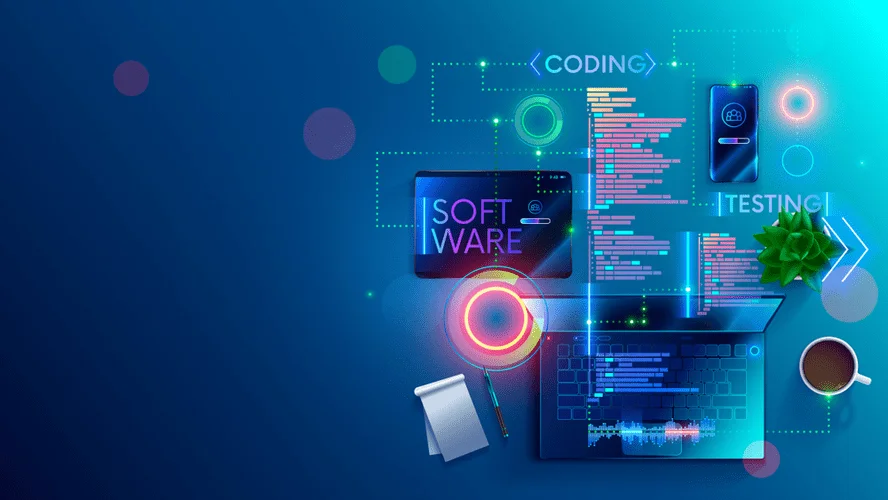Each goal to improve the flexibility, scalability, and maintainability of software methods, however they’ve totally different architectural principles, detail levels, management fashions, and deployment traits. This is where software program architectures like Service-oriented architecture (SOA) and Microservices come into play. Both approaches provide difference between soa and microservices ways to decompose advanced functionalities into smaller, manageable items. This article will discover the important thing differences between them, serving to you resolve which structure best suits your needs.
Synchronous Calls Vs Asynchronous Communication
By contrast, service-oriented structure organizes the applying as a set of services, however it usually addresses enterprise-wide issues and operates on a larger scale. Every architecture boasts distinct benefits, yet their effectiveness hinges on context. Do you should combine massive, various techniques or construct versatile, independently scalable parts inside a single application? Understanding these variations will help you design systems that align with your specific goals and challenges. While SOA and Microservices have gotten a platform for the higher effectivity and scalability of functions, there are still significant differences between them. Such distinctions are primarily based on variations of their strategy to service composition, communication, and deployment in relation to how they replicate the particular enterprise goals.
An API allows two or more microservices to trade knowledge instantly with out going through a centralized channel. Nevertheless, it might possibly create complex information pathways among dozens of microservices, which builders monitor and manage. With SOA, developers break down the software https://www.globalcloudteam.com/ functionalities into service supplier and service client layers. These layers communicate and change information via an enterprise service bus (ESB). Builders use SOA to simplify advanced functions into a number of reusable companies. Service-oriented structure and microservices each goal to make software more modular, but they approach this goal differently.
SOA, with its bigger companies and centralized administration, could require more coordination and may be much less aware of fast adjustments. Event-driven architectures are anticipated to revolutionize the greatest way microservices communicate with one another. By leveraging occasions, services can achieve the next degree of decoupling, permitting them to function independently and asynchronously. This approach enables organizations to build highly scalable and resilient systems that may deal with massive volumes of data and person interactions.
SOA proves notably advantageous in advanced situations the place legacy purposes and databases have to be synergized into a cohesive system. This structure excels in large-scale distributed environments, offering help regardless of geographical dispersion and disparate technologies. This design fashion is much less about breaking an software into smaller modules and more about integrating it via cloud computing a constellation of distributed, typically independently managed and deployed software program components. At its core, SOA is the philosophy of developing an IT infrastructure by using modular companies that may be reused and repurposed throughout numerous facets of an enterprise. This permits groups to use the best applied sciences and tools for that exact task.
These providers talk with each other utilizing light-weight protocols like HTTP or messaging queues. Larger, more diverse environments tend to lean toward service-oriented structure (SOA), which supports integration between heterogenous functions and messaging protocols via an enterprise-service bus (ESB). Smaller environments, together with web and cellular applications, do not require such a strong communication layer and are simpler to develop by utilizing a microservices structure. Service-oriented architecture (SOA) is an enterprise-wide strategy to software program improvement of application elements that takes advantage of reusable software program parts, or companies.

Gradually decoupling providers from the monolith allows organizations to manage the migration course of more effectively. Selecting the most acceptable architecture—be it microservices or SOA—will depend upon a corporation’s unique landscape of requirements and constraints. Each architectural type possesses merits and limitations that should be evaluated in light of the meant software’s nature, the organizational targets, and the group’s capabilities. Incorporating SOA into an existing infrastructure can streamline integration with other systems, mitigating the necessity for the repetitive, complex point-to-point connections that have been as soon as necessary.

Soa Vs Microservices Architecture: Key Differences Defined
This fundamental difference makes microservices a extra versatile and efficient choice for modern applications. Not Like microservices, which can make the most of a light-weight messaging structure or event-driven protocols, SOA is usually paired with an API layer facilitating connections between service consumers and suppliers. This allows cohesive and controlled interactions when dealing with complex business processes.
- Services ought to operate separately from each other and must not depend upon the particular implementation of other companies.
- A fully managed, single-tenant service for growing and delivering Java applications.
- Particular Person components could be scaled independently primarily based on demand, allowing for more granular management over assets and improved utility responsiveness.
- Spring Boot is the standard framework for Java microservices, enabling builders to arrange services in minutes.
- Choosing between the 2 architectures isn’t merely about technical preferences but involves a collection of trade-offs across numerous dimensions.
Moreover, the distributed nature inherent in microservices architectures underpins system resilience, making it nimbler in responding to and recovering from partial system failures. E-commerce platforms are a quintessential instance the place microservices structure can drive innovation and growth. With distinct parts like user authentication, product search, inventory administration, and fee processing, encapsulating these in particular person companies enhances modularity and scalability.
Each microservice can be developed, deployed, and scaled independently of the development status of other microservices. Our group of skilled builders and designers might help you navigate the complexities of recent software architecture and construct sturdy, scalable options for your business. Microservices communicate through lightweight protocols like HTTP/REST or messaging queues, enabling seamless interaction while remaining decoupled. Every microservice can make the most of totally different technologies and programming languages, offering flexibility in software choice. Moreover, containerization technologies like Docker facilitate consistent deployment throughout environments and simplify dependency administration.
To put it merely, service-oriented architecture (SOA) has an enterprise scope, whereas the microservices structure has an software scope. SOA emerged within the late Nineties and represents an important stage in the evolution of software improvement and integration. Earlier Than SOA was an choice, connecting a monolithic application to information or capabilities in one other system required advanced point-to-point integration that builders had to re-create for each new improvement project.
But the microservice strategy would break inventory management down into smaller companies, corresponding to availability checker, success, and accountings. Meanwhile, an application built with SOA is composed of companies that are more closely coordinated than with microservices. They keep control over how they characterize business objects and make their own data storage selections. So, from only a transient take a glance at a definition of SOA, we see clear differences with microservice architecture. This requirement runs immediately against how Fowler and Lewis describe microservices. Service orchestration implies the sort of synchronization and coupling between providers that microservices wouldn’t have.
